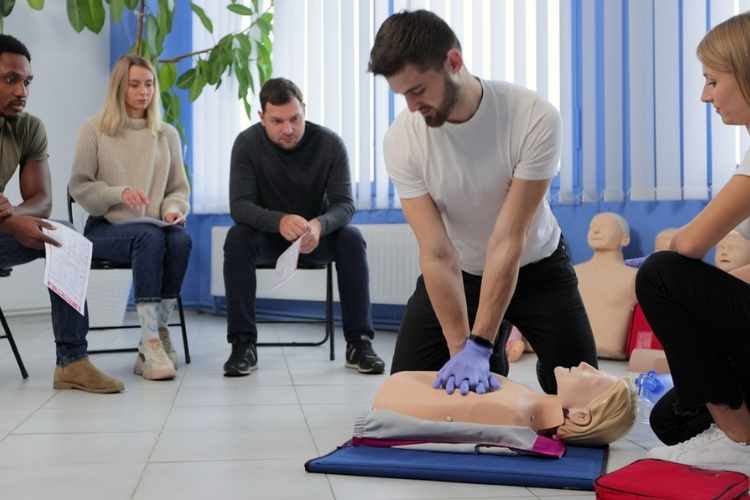CPR can be the difference between life and death in many situations. If someone goes into cardiac arrest, CPR can help to keep their heart and brain functioning until medical help arrives.
It can spell the difference between full recovery and long-term damage. Even if someone has a minor heart attack, CPR can help to prevent further damage to the heart.
Many might be surprised that it’s a relatively easy skill to learn if you want to study CPR from a basic life support course. It’s a small amount of effort for something that could potentially save someone’s life. Check out more reasons below to see how learning CPR is a great skill!
What is CPR?
CPR, or cardiopulmonary resuscitation, is a life-saving technique when someone’s heart stops beating. It involves chest compressions and mouth-to-mouth breathing. The chest compressions help to keep the blood flowing to the brain and other vital organs. Mouth-to-mouth breathing provides oxygen to the lungs when performing CPR.
Anyone can perform CPR, even if they have no intensive medical training. It is important to remember that CPR is only effective if it is started within a few minutes of the heart-stopping.
If you witness someone having a cardiac arrest, the first thing you should do is call 911. Then, you can start CPR. Most heart associations recommend that chest compressions be given at a rate of 100-120 per minute.
CPR can be exhausting, so it is important to take breaks as needed. If you are not trained in CPR, you can still help by doing chest compressions. Someone else can provide mouth-to-mouth breathing if they are qualified.
Who Should Learn CPR?
The answer is everyone! No matter your age or health condition, you can never predict when an emergency will arise. That’s why any heart association recommends that everyone should learn CPR.
CPR can be the difference between life and death in an emergency. When someone’s heart stops, every second counts. The faster you can begin CPR, the better your chances of survival.
If you ever see someone needing CPR, don’t be afraid to step in and help. There are a variety of online and in-person CPR courses so that you can be prepared for anything.
How to Learn CPR
If you want to learn CPR, you can take a few different avenues. You can find many instructional videos online or attend a CPR class offered in your community.
Another option is to take a CPR course offered by your local hospital. These courses can be free of charge, depending on your region, and will provide you with hands-on experience with CPR techniques.
Is Training Affordable?
CPR training is usually affordable and convenient. There are several online courses available that can be completed at the student’s convenience. However, it is important to check with your local area to ensure that your chosen course is legitimate. After all, you want the right skills and credentials when it comes to a life-saving skill like CPR.
CPR training covers many topics, including how to properly perform CPR on an infant, child, and adult. Students will also learn about using an automated external defibrillator (AED) and how to use one properly. A basic life support course with CPR will also cover first aid basics, such as how to care for a wound and what to do during a seizure.
Once you have learned CPR, it is important to stay up to date on the latest guidelines. Every place is different regarding guidelines, so it’s important to understand them. Plus, keeping updated on the guidelines helps make it easier to renew your certification.
CPR can be used in various emergencies, including cardiac arrest, choking, and drowning. Learning CPR is a good idea even if you never expect to use it because you never know when you or someone else might need it. Clearly, there are many reasons to learn CPR – but the most important is that it can save lives. If more people knew CPR, there would be an increased number of lives saved as a result. In which case, why wait longer to learn how to perform CPR? Today, find a credible basic life support course to help you gain this valuable, life-saving skill!

